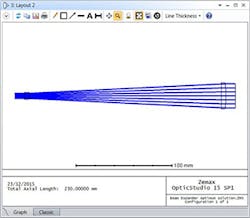Five times to use off-the-shelf optics
It’s nice to create custom lenses for optical products—and a must-have in certain situations when there are tight size and weight restrictions—but using stock optics in optical designs can have major benefits in terms of the time and resources required to get a product to market. Here are five times to use off-the-shelf optics, and ideas for making stock optics feel custom.
Five times to use off-the-shelf optics vs. custom lenses
- When time is tight. Building a design from a base, stock lens versus starting from scratch and customizing the lens will accelerate most optical product development timelines.
- When there’s access to a production facility. When engineers can’t use stock lenses, it’s often because they’re the wrong size for the need. But if they have access to a production facility where the lens edges can be reshaped, using a stock lens can still be more efficient than customizing one.
- When you’re seeking funding. Basing an optical design on a “proven” lens could help sell investors on the viability of the product.
- When you need a physical prototype in a hurry. If a physical prototype is needed quickly in order to test the product as a whole, use a stock lens for the prototype—even if the ultimate goal is a custom lens or if the stock lens is too heavy. You can always customize the lens design later.
- When budget is an issue. Custom lenses almost always cost more.
Tools to help engineers find the right lenses
Most optical design software offers stock lens catalogs to help optical engineers find the lenses they need. But the Stock Lens Matching Tool in OpticStudio takes it a step further, matching the need with the right lens—like a dating app for lenses. The tool will swap out the lenses in a design for the nearest equivalents in the selected vendors’ catalogs, and offers the potential to make great cost savings in the finished design by eliminating the need for custom manufacture. The tool allows for standout results, assuming that a design can work well with stock lenses. OpticStudio’s comprehensive Lens Catalog is available in all editions of OpticStudio, and the Stock Lens Matching Tool is available in Professional and Premium.
eGuide: How to understand how contrast varies or is lost in an optical system
Understanding contrast loss in an optical system is as important as having the right lens. Learn the basics.



